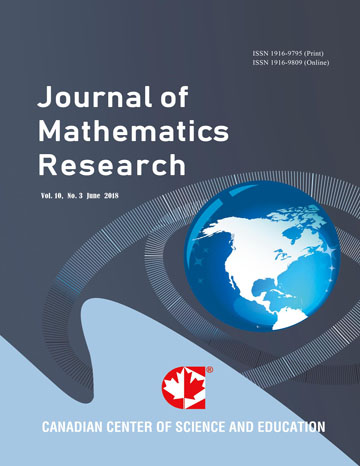Relationships between Ordered Compositions and Fibonacci Numbers
- Soumendra Bera
Abstract
A sequence of four compositions of 3 is: 1 + 1 + 1, 1 + 2, 2 + 1, 3. By the replacement of the plus signs (+) and commas (,) by the multiplication dots (?) and plus signs (+) respectively, the sequence becomes the summation series: 1?1?1 + 1?2 + 2?1 + 3, which is equal to 8 or 6th number in the famous Fibonacci sequence. It is a curious fact that the sum of a positive integer n and the products of summands corresponding to the compositions of n is equal to (2n)-th Fibonacci number. We establish the proposition after obtaining a special order of the compositions of n; and then obtain some other results. The results show that Fibonacci sequence has close connection with the special order of the compositions of n. Two Fibonacci identities, which we derive from a special recurrence relation, are useful to prove two theorems. The relationships are stated first in the theorems and are then shown in the consequences of the theorems.
- Full Text:
 PDF
PDF
- DOI:10.5539/jmr.v7n3p54
Index
- ACNP
- Aerospace Database
- BASE (Bielefeld Academic Search Engine)
- Civil Engineering Abstracts
- CNKI Scholar
- DTU Library
- EconPapers
- Elektronische Zeitschriftenbibliothek (EZB)
- EuroPub Database
- Google Scholar
- Harvard Library
- IDEAS
- Infotrieve
- JournalTOCs
- MathGuide
- MathSciNet
- Open policy finder
- RePEc
- ResearchGate
- Scilit
- Technische Informationsbibliothek (TIB)
- The Keepers Registry
- UCR Library
- Universe Digital Library
- WorldCat
Contact
- Sophia WangEditorial Assistant
- jmr@ccsenet.org
